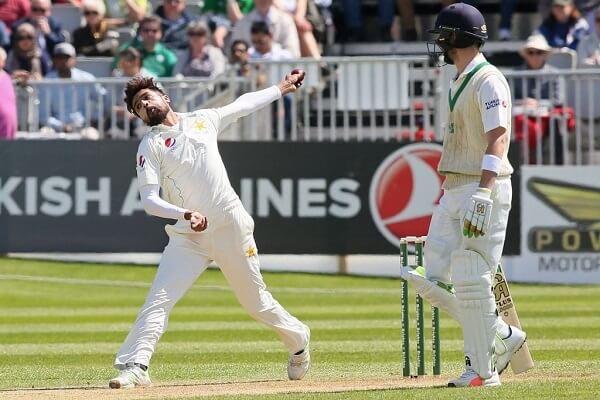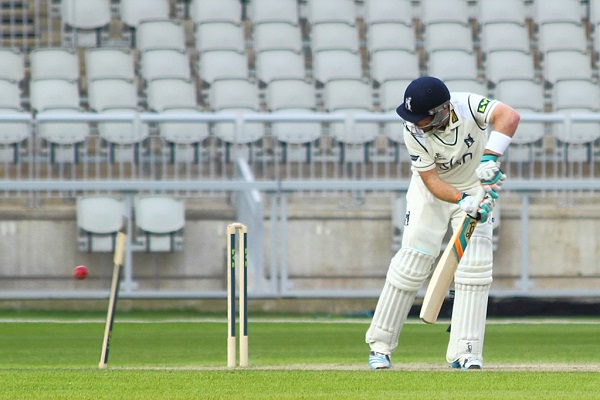Understanding the run rate in cricket can seem like a puzzle, especially if you’re new to the sport. Did you know that run rate, or runs per over (RPO), is a crucial statistic used to gauge the momentum of a batting team? In this article, we will make sense of all the numbers and teach you how to calculate and understand run rates with ease.
Stay tuned; it’s time for some cricket math made simple!
Understanding Run Rate in Cricket
- Run rate, also known as runs per over (RPO), is a statistic used in cricket to measure how fast a team is scoring.
- To calculate run rate, divide the total runs scored by the total overs bowled in an innings. A higher run rate indicates faster scoring.
- Run rate plays a crucial role in cricket tournaments and can determine a team’s performance and ranking. It helps teams plan their innings and put pressure on the opposition.
- Factors such as batting performance, the impact of wickets, and the number of overs remaining can affect the run rate in cricket matches.
The run rate in cricket is a crucial factor that determines a team’s performance and standing in tournaments.
Definition and Calculation
The run rate in cricket is also known as runs per over (RPO). It shows how many runs a batting team gets for each over. To find the run rate, divide the total runs by the total overs bowled in an innings.
For example, if a team scores 300 runs in 50 overs, their run rate is six. This number tells us how fast the team is scoring. A higher run rate means faster scoring and a lower one means slower scoring.
We also use a net run rate (NRR) to rank teams in a tournament if they have equal points. The NRR finds out by taking away average runs given up from average runs scored per over.
Importance in Cricket Tournaments
The run rate plays a crucial role in cricket tournaments. It helps teams understand the pace at which they are scoring runs and allows them to plan their innings accordingly. A higher run rate indicates that a team is scoring quickly, which can put pressure on the opposition.
On the other hand, a lower run rate suggests that a team is struggling to score runs rapidly.
In cricket tournaments, the net run rate (NRR) is used as a tiebreaker when teams have the same number of points. NRR takes into account both batting and bowling performances, providing a more comprehensive view of a team’s overall performance.
This means that not only do teams need to focus on scoring runs but also on restricting their opponents’ scoring rates. By maintaining or improving their NRR, teams increase their chances of advancing further in the tournament.
Factors Affecting Run Rate
Factors affecting run rate include batting performance, the impact of wickets, and the effect of overs.
Batting Performance
Batting performance is a crucial factor in determining the run rate in cricket. It directly affects how many runs a team scores per over. If the batsmen are playing well and scoring quickly, the run rate will be high.
On the other hand, if they struggle to score runs, the run rate will be low. The batting performance also determines how many wickets are lost during an innings, which can further impact the run rate.
Additionally, the strike rate of individual batsmen contributes to calculating the overall run rate for a team. A strong batting performance is essential for maintaining a high run rate and achieving success in cricket tournaments.
Impact of Wickets
Wickets play a significant role in determining the run rate in cricket. When a team loses wickets, it slows down their scoring rate because new batsmen need time to settle and build partnerships.
Additionally, each wicket reduces the number of overs left for the batting team to score runs. Therefore, losing wickets can have a negative impact on a team’s run rate as they try to maintain momentum and set or chase targets effectively.

The loss of key batsmen can be particularly detrimental to the run rate as they are often the ones who score quickly and keep up with the required rate.
Effect of Overs
The number of overs in a cricket match has a significant impact on the run rate. The run rate is calculated by dividing the total runs scored by the number of overs bowled. If there are fewer overs remaining in an innings, teams tend to score more aggressively to increase their run rate.
On the other hand, if there are more overs left, teams might focus on building a solid foundation before accelerating their scoring later in the innings. Additionally, when chasing a target, teams need to manage their run rate according to the number of overs they have remaining.
This makes overs a crucial factor in determining how fast or slow a team scores and influences their overall run rate.
How to Calculate Run Rate
To calculate the run rate in cricket, you can use a simple equation by dividing the total number of runs scored by the number of overs played. For example, if a team has scored 250 runs in 40 overs, their run rate would be 6.25 runs per over.
Simple Equation
The run rate in cricket is calculated using a simple equation. To find the run rate, you divide the total number of runs scored by the batting side by the total number of overs bowled in an innings.
This gives you the average number of runs scored per over. For example, if a team has scored 150 runs in 30 overs, their run rate would be 5 runs per over. It’s an easy way to measure how fast or slow a team is scoring during a match.
Examples
The run rate in cricket can be better understood with some examples. For instance, if a team scores 120 runs in 20 overs, their run rate would be 6 runs per over. On the other hand, if another team manages to score only 80 runs in the same number of overs, their run rate would be 4 runs per over.
This shows that the first team has a higher scoring rate compared to the second team. The net run rate is calculated by deducting the average runs conceded per over from the average runs scored per over by a team.
So, if a team’s average scoring rate is 5 runs per over and they concede an average of 4 runs per over while bowling, their net run rate would be +1. These examples highlight how teams’ performances are analyzed based on their run rates and how it affect their ranking in tournaments.
Criticisms of Run Rate in Cricket
Critics argue that the run rate in cricket is not reflective of wickets lost and can be susceptible to manipulation, leading to calls for alternatives in the team ranking.

Not Reflective of Wickets Lost
The run rate in cricket is often criticized for not being reflective of the number of wickets lost by a batting team. While it measures the scoring rate, it doesn’t take into account the impact of losing wickets on a team’s performance.
Losing wickets can slow down the run rate significantly as new batsmen need time to settle in and build partnerships. This means that a team with a high run rate may have lost several wickets, which can weaken their overall position in a match or tournament.
Therefore, relying solely on run rate without considering the number of wickets lost can provide an incomplete picture of a team’s batting performance.
Susceptible to Manipulation
The run rate in cricket is susceptible to manipulation. This means that teams can try to artificially increase or decrease their run rate by altering their batting strategy or other factors.
For example, a team might intentionally score slowly in order to conserve wickets and prevent the opposition from chasing down their target easily. On the other hand, a team might deliberately score quickly to boost their net run rate and improve their chances of qualifying for the next round of a tournament.
This susceptibility to manipulation has led to criticisms of the run rate as a fair measure of team performance and has prompted discussions about alternative methods for evaluating teams’ performances in cricket tournaments.
Alternatives to Run Rate
There are alternatives to using the run rate in cricket tournaments. One alternative is the Duckworth-Lewis-Stern method, which takes into account the number of overs remaining and wickets lost when calculating targets in rain-affected matches.

Another alternative is the use of NRR (Net Run Rate) as mentioned earlier, which considers both batting and bowling performances to determine team rankings. Some critics suggest that other statistical methods could be used, such as analyzing partnership performance or scoring rates at different stages of an inning.
Ultimately, finding alternatives to run rate can help provide a more accurate reflection of a team’s performance in a cricket tournament.
Conclusion and Importance of Run Rate for Teams in Cricket Tournaments
In conclusion, the run rate is an important factor in cricket tournaments. It helps teams understand how quickly they are scoring runs and provides a ranking system based on net run rate.
Calculating the run rate takes into account both batting and bowling performances, giving teams a clear picture of their overall performance. By analyzing the run rate, teams can strategize better and chase targets effectively in limited-overs matches.
FAQs
Q: What is a run rate in cricket?
A: A run rate in cricket tells us the average runs per over that a team scores.
Q: How does net run rate work in an ongoing cricket match?
A: Net run rate is obtained by deducting the average runs per over given up from the innings’ run rate. It shows the team’s net score for each overplayed.
Q: Can player performance affect the run rate?
A: Yes, as both batsman and bowler play an important role. The batting strike rate affects scoring while the bowling economy influences how many runs are given away.
Q: How do you calculate batting average and bowling economy rates?
A: Batting average is found by dividing total runs made by the number of times out while bowling average divides total conceded runs by wickets taken.
Q: What use does team make of knowing their Run Rate Analysis?
A: This helps teams to plan out their batting order and aids them during a crucial point like during a tough-going ‘run chase’.
